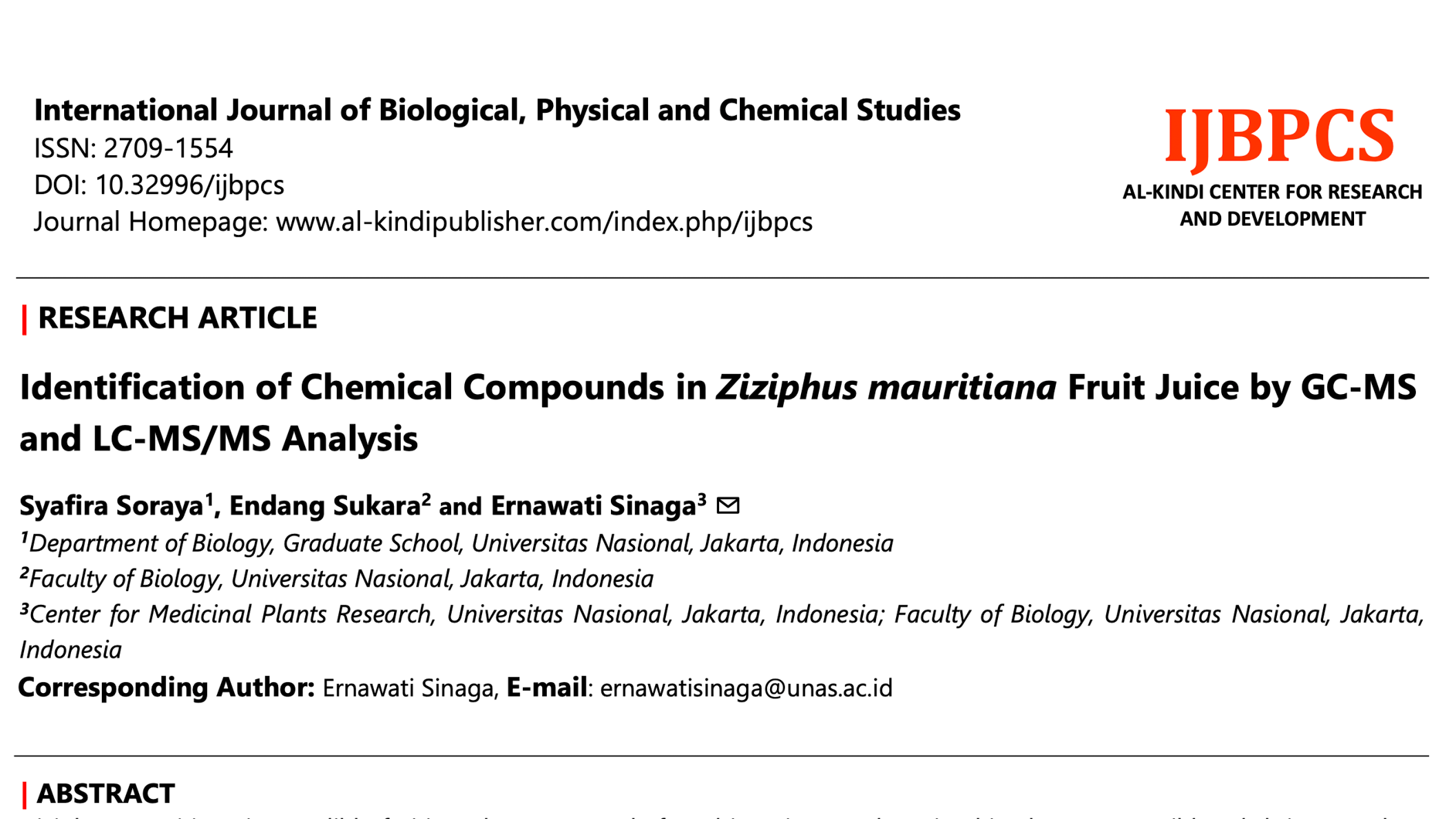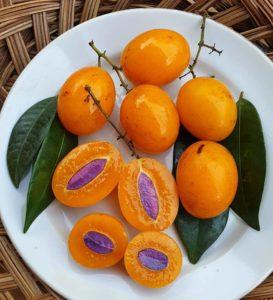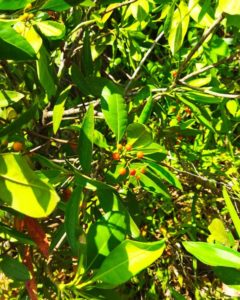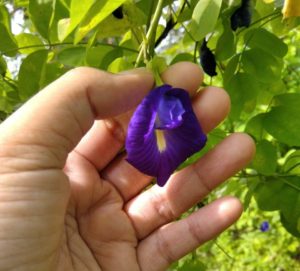Author
- Syafira Soraya, from Department of Biology, Graduate School, Universitas Nasional, Jakarta, Indonesia
- Endang Sukara, from Faculty of Biology, Universitas Nasional, Jakarta, Indonesia
- Ernawati Sinaga, from Center for Medicinal Plants Research, Universitas Nasional, Jakarta, Indonesia and Faculty of Biology, Universitas Nasional, Jakarta, Indonesia
Abstract
Ziziphus mauritiana is an edible fruiting plant commonly found in Asia. In Indonesia, this plant grows wild and thrives on the islands of Bali, Lombok, and Sumbawa. Although it is edible and has good potential as food and medicinal ingredient, in Indonesia, the fruits of Z. mauritiana are underutilized and have almost no economic value. Information about the bioactivity and chemical content of the fruit is limited. To evaluate its possibility of being developed as functional food, a GC-MS and LC-MS/MS analysis was carried out to identify the phytochemical content of the fruit juice. From the GC-MS chromatogram, four compounds were identified with a quality match of 85% and above. The compounds were 5-( hydroxymethyl)-2–furancarboxaldehyde (43.45%), 5, 5′-(oxybis(methylene)) bis-2- furancarbox-aldehyde (25.99%), 2,3–dihydro-3,5–dihydroxy–6–methyl-4H–pyran–4-one (6.05%), and hexadecanoic acid (2.16%). The result of the LC-MS/MS analysis showed 42 peaks of different chemical compounds and included several groups of compounds such as flavonoids, alkaloids, phenols, terpenoids, and organic acids. From these results, it can be concluded that Ziziphus mauritiana fruit juice contains various chemical compounds that are likely to have medicinal activity and therefore has good potential to be used and developed as a functional food.
Keywords: Fruit juice, GC-MS, LC-MS/MS, Ziziphus mauritiana
You can find this article at:
https://al-kindipublisher.com/index.php/ijbpcs/article/view/3940
How to cite:
Soraya, S., Sukara, E., & Sinaga, E. (2022). Identification of Chemical Compounds in Ziziphus mauritiana Fruit Juice by GC-MS and LC-MS/MS Analysis. International Journal of Biological, Physical and Chemical Studies, 4(2), 11–19. https://doi.org/10.32996/ijbpcs.2022.4.2.2




